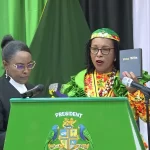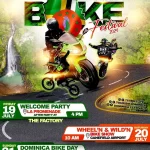Morne Neg Marron
Morne Neg Marron (also spelled: Morne Negre Mawon, Neg Mawon, and Morne Negres Marrons) is a significant mountain located in the rugged interior of Dominica. Part of the island’s extensive volcanic landscape, it rises amidst dense tropical rainforests and offers a striking example of Dominica’s volcanic origins. The mountain is situated near the boundaries of the Parishes of Saint Joseph, Saint David, and Saint Paul, further embedding it within Dominica’s interior.
Geographical Significance
Morne Neg Marron is one of the many volcanic peaks that shape Dominica’s terrain, alongside other notable mountains such as Morne Trois Piton and Morne Couronne. The area is home to several natural attractions, including rivers like the Layou River and waterfalls like Spanny Falls and Jacko Falls, which flow through the surrounding rainforests. The mountain’s steep and forested slopes contribute to the region’s rich biodiversity.
Historical Context
Historically, Morne Neg Marron is tied to Dominica’s resistance movements. The mountain’s name, Neg Mawon “Black Maroon” reflects its association with the Maroons, enslaved Africans who escaped to Dominica’s interior to establish free communities. The nearby Jacko Steps and Jacko Flats are landmarks associated with the legendary Maroon leader, Chief Jacko, who used the mountain as a strategic base during his resistance against colonial forces.
Conservation and Eco-Tourism
Today, Morne Neg Marron is an important site for ecotourism and conservation efforts. Its remote location makes it ideal for hikers and nature enthusiasts exploring the Waitukubuli National Trail, particularly “Segment #5,” which traverses this area. Conservation initiatives, supported by the Canada Fund for Local Initiatives (CFLI) and the National Export Strategy (NES), help protect the mountain’s rich ecosystems and preserve its cultural heritage.
Morne Neg Marron remains a symbol of Dominica’s natural beauty and historical significance, attracting those interested in its ecological importance and role in the island’s resistance history.




